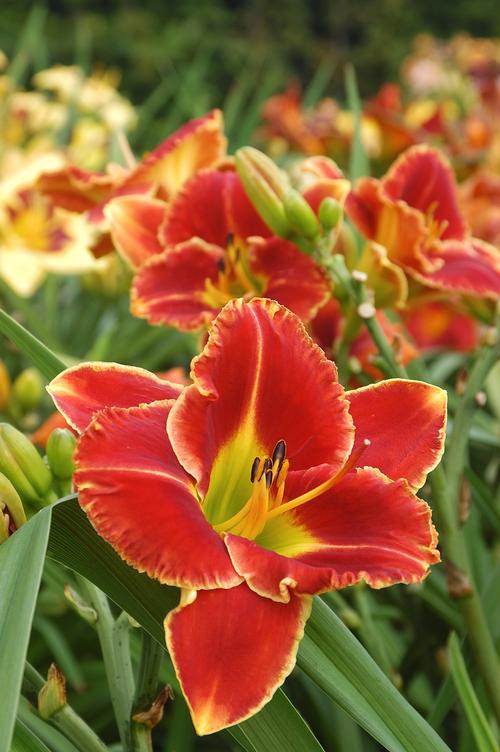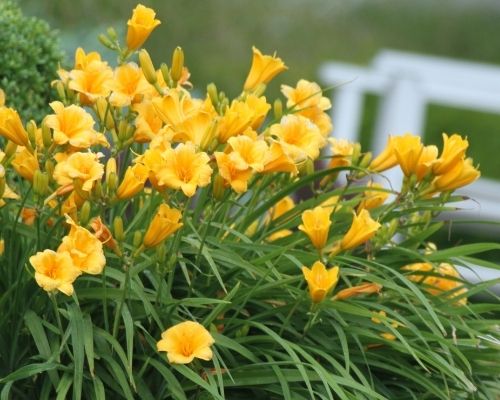Your Guide to Planning, Planting, and Growing Daylilies
Daylilies may be the most carefree of all flowering perennials. The plants grow quickly and are long lived. They thrive in almost any type of soil, will grow in sun or part shade, and are rarely troubled by insect pests or disease. Daylilies are known for their toughness, but their colorful and abundant flowers are also dazzling. Blooming starts in midsummer and continues into early fall, with new blossoms opening each day.

Plan for Success
Shade and Sun: For best results, grow daylilies in full sun. The plants also grow well in partial shade, but may produce fewer flowers.
Zone: Most daylilies will thrive in hardiness zones 4-9. Not sure about your growing zone? Check the USDA zone map here.
When to Plant Daylilies: Plant bareroot daylilies in early spring while the plants are still dormant. Potted daylilies may be planted at any time during the growing season.
How to Plant Daylilies
Loosen the soil to a depth of 12”. Mix in several handfuls of compost and some all-purpose granular fertilizer (if desired).
Put the daylily in the hole so the crown of the plant (where the roots meet the stem) is 1” below the soil line.
Cover the roots with soil and water well.
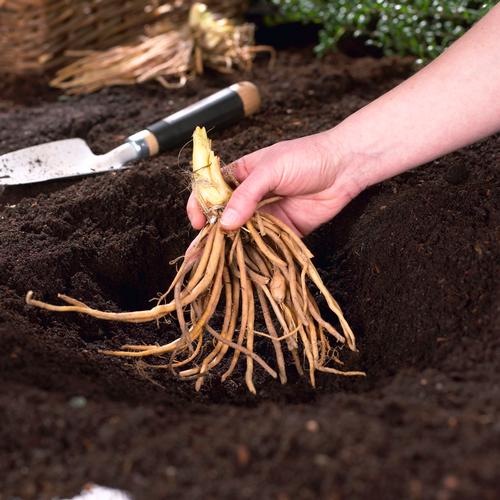
Where to Plant Daylilies
Perennial Gardens
Daylilies add midsummer color to flower beds and borders. They bloom at the same time as other high summer bloomers such as Shasta daisies, bee balm and garden phlox. With thousands of varieties to choose from, it’s easy to find a height, bloom time and color combination to fit your garden.
Natural Areas
Though daylilies are not native plants, their flowers and foliage work well with ornamental grasses, asters, echinacea, rudbeckia, and other plants that have an informal growth habit and the vigor to fend for themselves.
Difficult Slopes
Daylilies can be a colorful, low maintenance solution for lawn areas that are steep or otherwise hard to mow. Their dense root system reduces soil erosion and can choke out most weeds. Daylilies are ideal companions for daffodils. As the daffodil foliage dies back in late spring, the emerging daylily foliage covers it up.
Wet Areas
Daylilies will tolerate drought, but they also tolerate wet feet. They are perfect for planting beside a pond or stream and are great for rain gardens.
Foundations and Fence Lines
Daylilies are ideal for creating a no-maintenance border along a fence, beside a walk or driveway or against an outbuilding. They’ll soften hard lines and reduce the chore of mowing and trimming.
Containers
Daylilies, especially some of the dwarf varieties, grow well in containers. Even when they’re not in bloom, the lush foliage makes a good backdrop for other flowers.
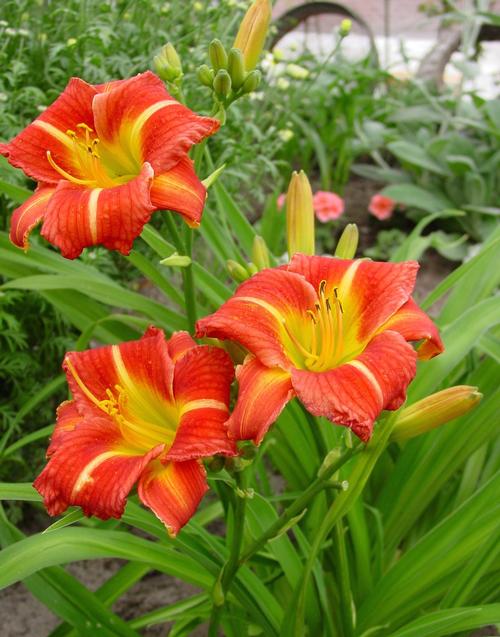
What to Expect
Daylilies are not fussy about soil and will thrive in places that are too wet or too dry for most other perennials. That said, daylilies grow best in fertile, well drained soil.
During their first growing season, daylilies should be watered during dry weather. This will help them get established more quickly. Water infrequently, but deeply, making sure the water soaks down into the root zone. Mulching around newly planted daylilies will help keep the soil moist and reduce weed competition.
Like most perennials, it takes daylilies a year or two to get established and hit their stride. Once they do, they'll bloom reliably for many years.
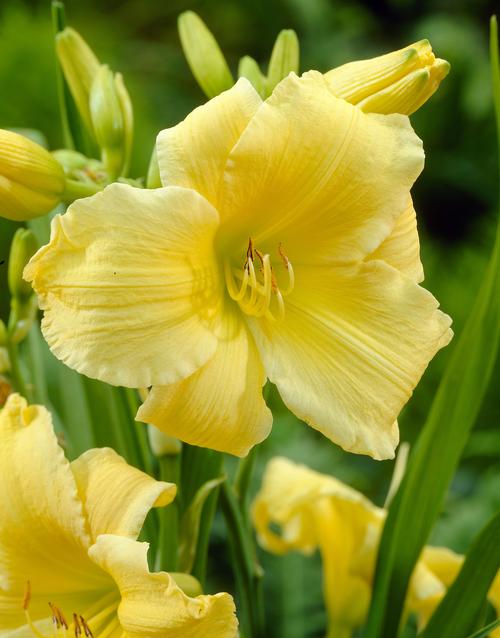
How to Care for Daylilies
Each daylily flower lasts just one day. To keep the plants looking their best, snap off the spent flowers, taking care not to disturb nearby buds. Once the scape (stem) has finished blooming, you can cut it back to the ground to keep the plant looking neat and prevent it from putting energy into seed production. This may also encourage additional flower spikes.
Daylily foliage usually begins turning yellow in late fall, though some varieties stay green right through the winter. Spent foliage may be removed in late fall or early spring. If you wait until spring, it can be easily raked away.
Depending on the fertility of the soil, daylilies benefit from an annual spring application of granular all-purpose fertilizer (follow package directions). Sprinkle the fertilizer around the base of the plant when you are clearing away the prior year’s foliage.
Daylilies appreciate being mulched with shredded bark, shredded leaves or other organic materials. It’s an easy way to control weeds and also helps keep the soil moist.
Daylilies will grow for many years without any attention, but the plants will produce more flowers if they are divided about every 5 years. This is a job for late summer, after the plants have finished blooming. Dig up the entire plant and place it on a tarp. Cut or pull the clump apart into manageable clumps. Before replanting, use scissors to trim the foliage back to a height of 5 or 6".
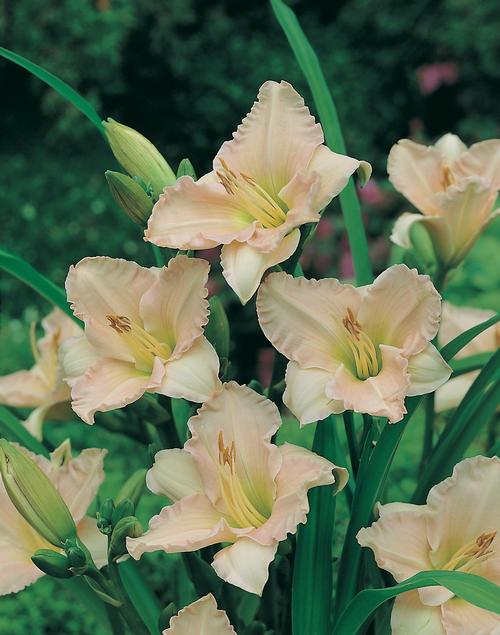
See our entire selection of daylilies HERE.
To learn more about growing daylilies and other sun-loving perennials, you may be interested in reading:
10 Easy Perennials for Sunny Gardens
How to Select Perennials for All Season Color

